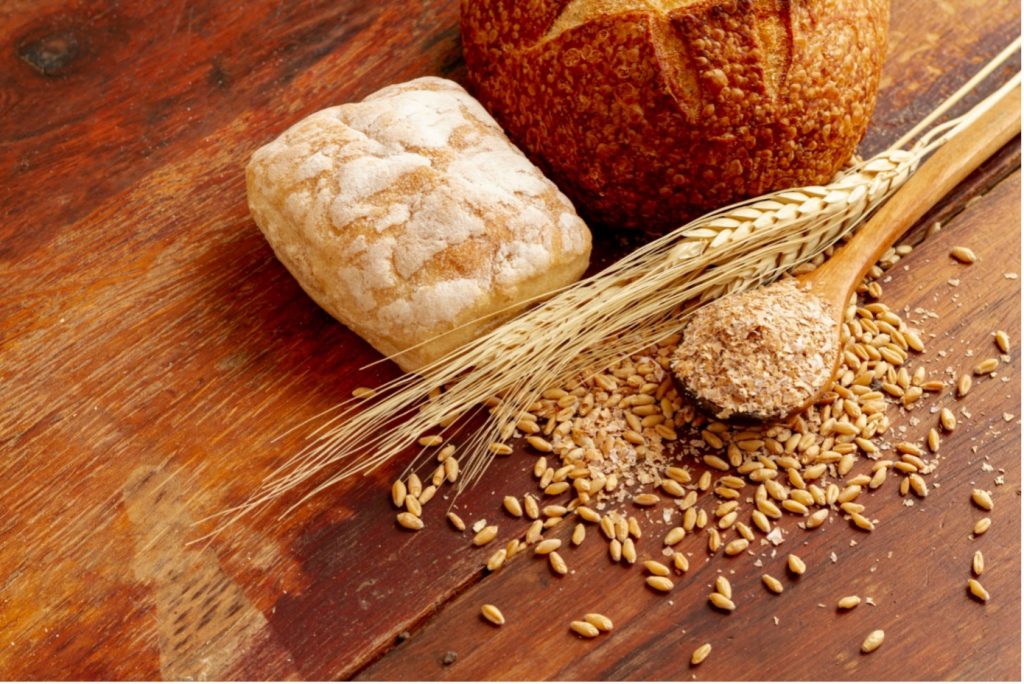ONCE UPON A TIME ...
All articles… the different types of flour
Wheat flour, oatmeal flour, rye flour, T45 or T80… There are numerous names for ingredients which, on first impression, seem similar.
However, we would be wrong to underestimate the role played by flour in a preparation and the importance of choosing the right one. For example, the same flour can’t be used to make brioche or wholemeal bread! So, to better understand the particularities of the different flours and their uses, discover some of the trade secrets of pastry chefs and bakers.
The key role of flour in a recipe
Flour is used in the vast majority of pastry and bakery recipes. It is one of the essential ingredients in a wide range of preparations. And for good reason! Flour serves as a binder between the various ingredients. Moreover, gluten, naturally present in flour, gives elasticity to the dough. It makes the latter dense and allows it to rise in order to obtain different and delicate consistencies. Flour also greatly contributes to the final taste of the preparation. Thus, the type of flour, as well as the way it is baked will reveal its distinctive flavours.
Flour production
In France, the most frequently used flour is wheat flour. By looking closely at a grain of wheat, you can identify two parts: the kernel, which is the inner part, and the bran, which is the outer layer of the grain. The task of the miller is to separate these two elements. Indeed, flour is made from the kernel of the wheat grains. Wheat grains are crushed and sieved several times until the expected result is obtained.

Different flours for different uses
We can now easily understand that the various types of flour are the result of different working methods of the wheat grains. So, in order to identify them, the packaging indicates their type by a “T” for type, followed by a number.
This number corresponds to the so-called “ash content”. Calculation is based on the quantity of ash remaining after incinerating a small quantity of flour at 900°C. In fact, this residue corresponds to the minerals contained in the flour, which are themselves present in the bran of the wheat grain.
In other words, the “ash content” indicates the degree of refining of flour and its bran content. Therefore, a highly refined flour contains very little bran and consequently few minerals. However, it is rich in gluten and will rise more than a wholemeal flour.
T45, T55 or T80 wheat flour: for which recipes?
Now let’s have a look at the various flours marketed in France and their applications:
- T45 or white flour: with its high gluten content and high elasticity, this flour is used to make puff pastry and pastries, but also to make financiers, for instance;
- T55: T55 flour is a multipurpose flour, perfect for shortcrust pastry, choux pastry and fruits tarts;
- T65: T65 flour is richer in bran than the previous two and can be used to make white bread and delicious cakes;
- T80: also called brown flour, T80 flour is perfect for making farmhouse or semi-wholemeal breads;
- T110: this wholemeal flour is used to prepare wholemeal and special breads;
- T150 or integral flour: contains the most bran and consequently the most minerals and nutrients. This flour is used to make wholemeal breads.
For risen doughs, the pastry chef can also opt for oatmeal flour. This T45 or T55 type flour is obtained by milling hard wheat, that is to say varieties of wheat with a high content of protein, and thus gluten. As a result, it offers incomparable elasticity and volume.
On the contrary, the higher the ash content, the more complete the flour, because it is richer in bran. This is precisely why we use T65 and higher flours to make bread. From T80 flour, professional bakers frequently make mixtures. In this way, they preserve the elasticity of their preparations while working on developing the subtle flavours of their recipes.

Other flours
Although there are many types of wheat flour, other raw materials are also used to make flours that have delicate flavours. For example, rye flour and spelt flour. Alternatively, you can turn to less common flours, for example chestnut, buckwheat or corn flour. These flours are naturally gluten-free. That’s also why artisans generally mix them with other more traditional flours. An ingenious way to add unique flavours to their breads and pastries.
The different flours – a real art !
Once you start to learn about the various flours and their specific characteristics, you quickly realise that they represent a very technical dimension of the profession of artisan pastry chef or baker. The importance of this ingredient reveals the precision with which professionals select their flours, mixtures and quantities to obtain perfect preparations.
BRIEFLY
Laurent Le Daniel has just been named a Chevalier dans l’Ordre National du Mérite. Congratulations to him for this prestigious award, which rewards a passionate pastry chef very invested in the sustainability of his profession.
Prepare Valentine’s Day! Take the time to discover the chocolate or fruity sweets offered by our chefs for sale online. By ordering this week you will be delivered on time.
The French team is selected for the Pastry World Cup! She won the European Cup ahead of Italy and the United Kingdom who are also selected for the grand final in January at Sirha.
JOBS
Pâtisserie
La maison Zanin recrute pour son laboratoire de Sallanches un Second pâtissier en CDI – 39h. Toutes les informations ici !
Pâtisserie
La maison Ducobu, en Belgique, recrute sur différents postes. Toutes les informations ici.





